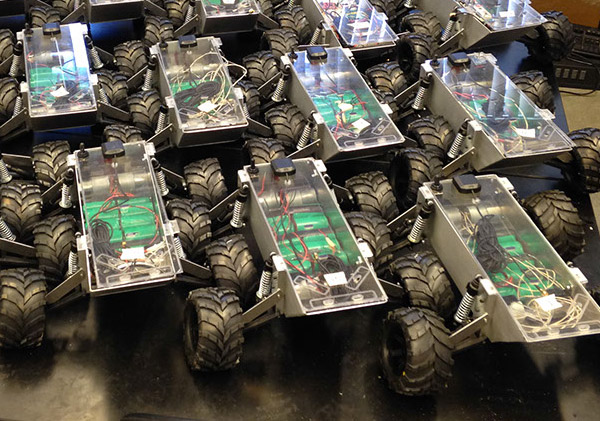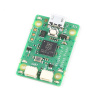A team of mechanical, electrical and software engineering students at the University of New Hampshire, Durham, is taking a cue from nature and designing a swarm of fully autonomous all-terrain robots for the mission of space exploration. The robots will be programmed with NavSwarm’s particle swarm optimization algorithm to search large areas of planets for water, natural resources and signs of life. Using an XBee module and a Raspberry Pi, the robots will communicate with one another, marking areas they travel and utilizing sensors.
SparkFun is donating Arduino Mega microcontroller boards to provide voltages and pulse width modulation for hexapod robots the UNH students are building from scratch. The aluminum chassis for 10 robots have been built, the suspension systems have been completed, and the 3D printed sensor housings were printed using the UNH student 3D printer. Now that the mechanical engineering team has set up the empty shells of the robots (motors, chassis, cover, etc.), the electrical engineering team has been able to begin placing electronics inside. The software engineering team is currently programing the bots to navigate autonomously, avoid obstacles and ultimately work together as a swarm to scour the terrain, taking in altitude measurements and then collaborating data.







